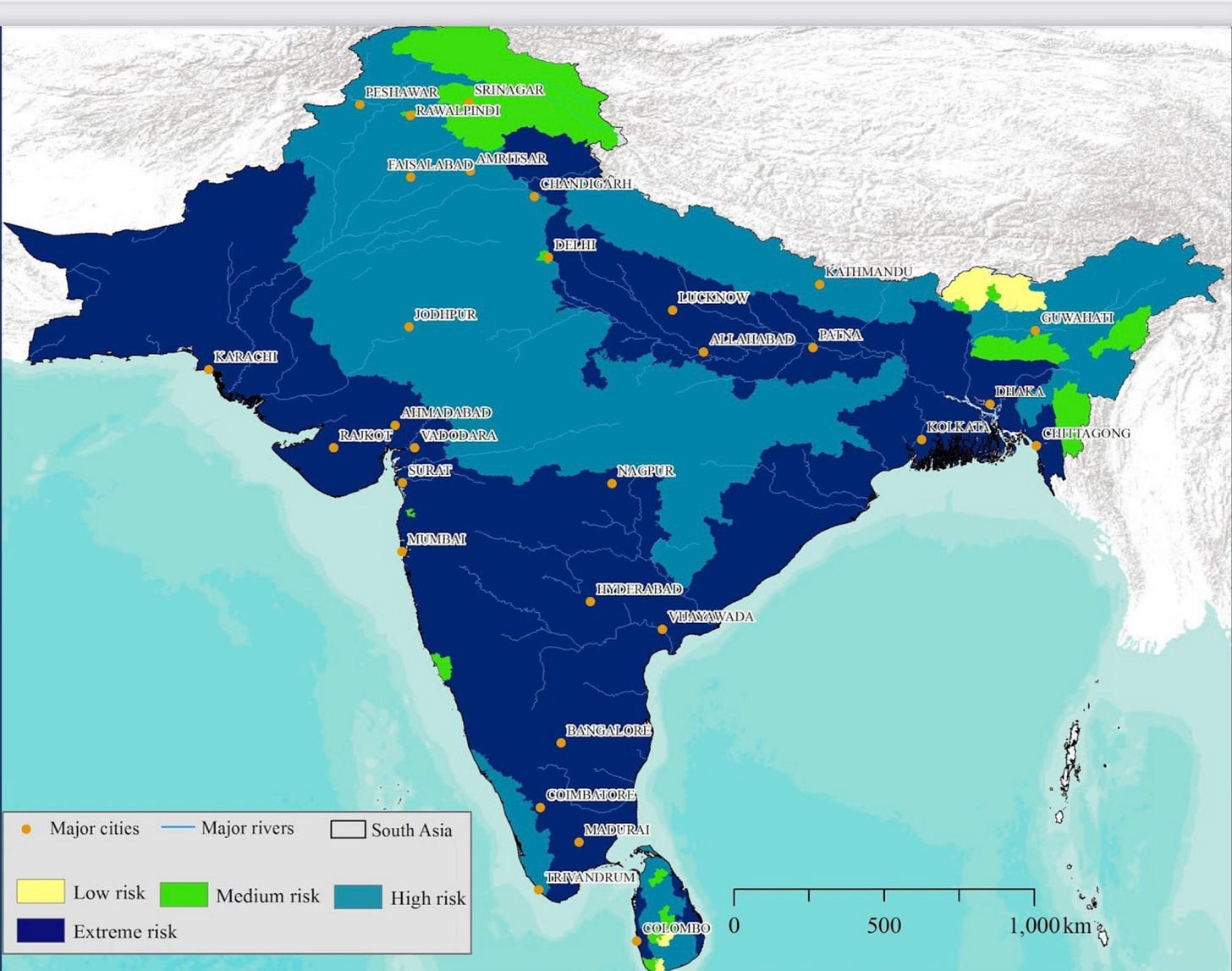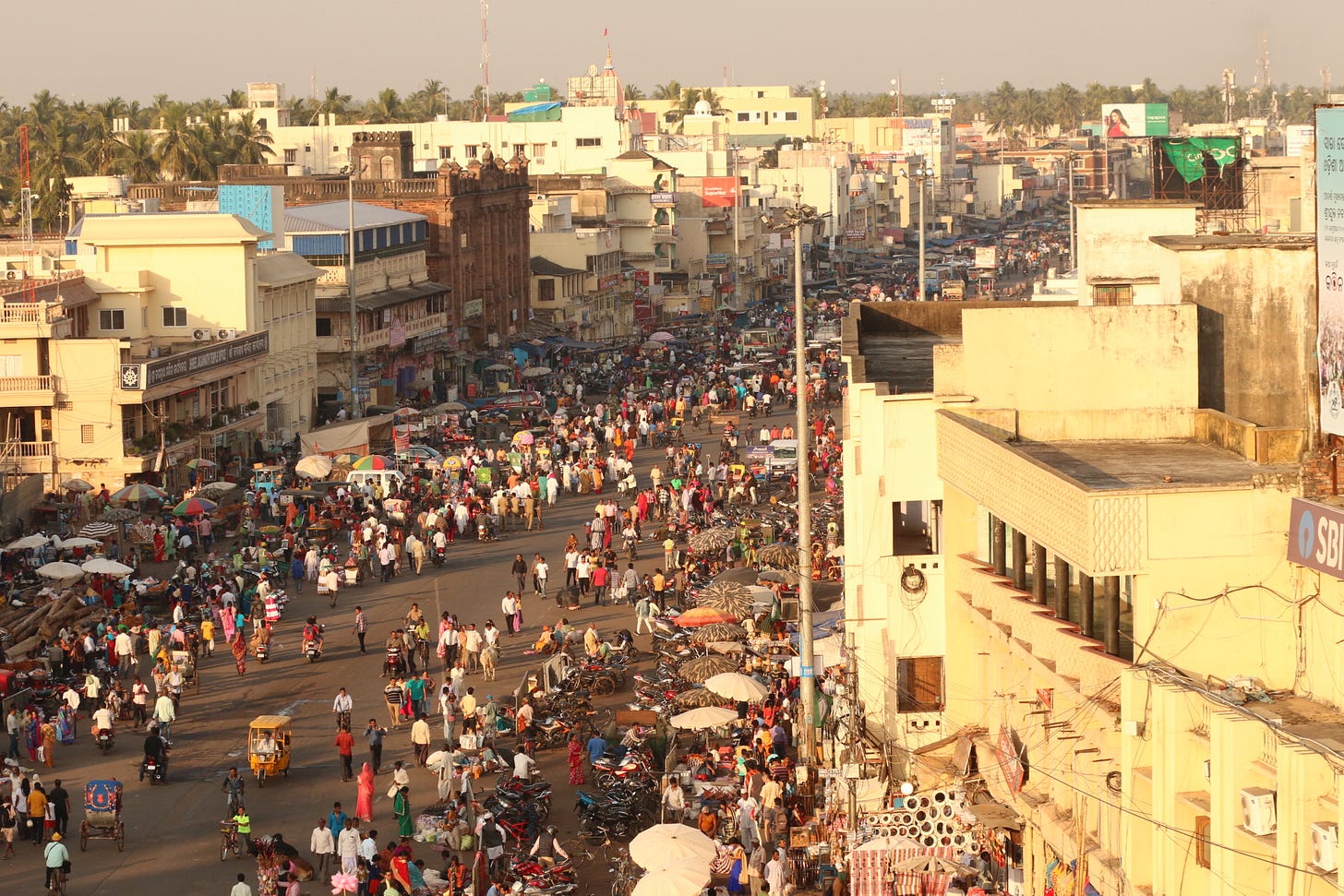India’s Reverberating Climate Challenge
It’s not one thing, or even many things, but the combination of things
It’s hard to overstate how the world’s changing climate and weather patterns are altering the Indian subcontinent.
You name it and India is dealing with it, and will deal with much more of it in the coming years: rising sea levels, floods, drought, heat waves, more frequent and powerful cyclones, erratic monsoons, wildfires and melting glaciers. The full climate change catalogue, front to back.
Of course, if you’re outside India and reading the headlines, you know Indians aren’t focused on any of this right now. They’re trying to manage the planet’s most intense outbreak of Covid-19 to date. I’d link to an article, but I can’t find one that comes even close to capturing the scale of this horrendous spike. Even after spending the past year in the U.S. — a frequently harrowing experience as Americans endured what to this point were some of the worst spates in the global pandemic — finding words or even photos that convey India’s plight is almost impossible. Maybe the (very disturbing) photos of @adnanabidi on Instagram come as close as anything to bringing this awful situation into focus for those not there.
I bring Covid up not simply because one cannot discuss India right now without acknowledging it. And not because there’s some direct connection between Covid and climate change, like that climate change caused Covid or something. I’ll explain later more about how I think about what is and isn’t “caused” by climate change, where my project is concerned.
Covid may not be caused by climate change, but massive public health challenges will be among the side effects of the changing climate, those reverberating from the primary climate impacts I catalogued above.
Nearly every country on earth is now experiencing the fallout from climate change. Large countries, such as the U.S., China, Russia and India, are experiencing the whole array of impacts. Some small, low lying islands are being overwhelmed by one climate effect, like rising sea levels, or two, if increasing storms are exacerbating the inundation from higher seas. India is the poster child for the big oncoming challenge many countries will face, particularly large and diverse ones: myriad, serial climate-exacerbated catastrophes that become interlinked, if only in competing against each other for society’s resources and will to address them.
None alone constitutes a nationwide crisis in the way that the current Covid spike is an overriding national emergency that touches every corner of India. Yet given India’s meager economic resources — at least as measured on a per person basis — it is not hard to imagine that as these impacts intensify they could compound to overwhelm problem solving capacity. Sea level rise leads to more flooding during storms which wash away more villages, creating more refugees who require more resources from the communities they move to, communities that are themselves susceptible to sea level rise. Heat waves featuring temperatures that threaten human survival cut into productive outdoor working hours — potentially reducing the workday by 40% in some areas by 2050, according to one estimate — stunting the economic growth needed to generate the resources to throw at the greening of the energy system.
For India, the challenges are many, diverse and extreme. A few years back, Indian journalist @dishashetty20 — with support from two terrific news outfits, one inside India and the other based in the Washington D.C. — took a comprehensive look at the different ways climate change is hitting her country.
Here’s an impact map from a more recently released report about global security threats from climate change by an international group of military, security and intelligence experts.

That this study group is thoroughly international underscores that nobody believes the fallout from climate change won’t cross borders. This is especially true of India, where the hardest hit areas are mostly where India touches the outside world, whether that’s coastline or rugged, sometimes-disputed, high-altitude frontiers. The number of people living in these areas, many of them poor and vulnerable, can be difficult to comprehend. More than 20 million people call the low-lying city of Mumbai home, virtually all of them in flood-prone areas. To the north, some 1.3 billion people, sixty five times Mumbai’s population, depend on the waters that flow from the Himalayan watershed. Not all of them are Indians — the rivers that flow from the earth’s rooftop travel through China, Pakistan, Nepal and Bangladesh, as well — but many are and the rest live just across India’s borders.
If climate impacts compound to make each other harder to address, they also combine to present a massive collective distraction from the overarching task of stopping the planet’s warming. This is the connection between climate disruption and energy transition, the nexus at which my reporting project is aimed.
As interlinked, climate change-induced disruptions sap attention and resources from governments, companies, private and personal efforts — society itself, really — the will and ability to mount an expensive, decades-long overhaul of the global energy system is going to be tested. The world could become overwhelmed, just as Covid has overwhelmed India’s health care system, already thoroughly stressed even before Covid came along.
Last year, India’s initial Covid wave and subsequent lockdown dampened the growth of solar power installations, as construction projects ground to a halt. It looks like that pattern could well repeat this year. There’s obviously no other choice. Yes, fossil fuel consumption will likely dip again, as it did last year, avoiding some greenhouse gas emissions, which are closely associated with economic activity. But future renewable projects are being delayed. The life of coal plants will be extended for now. Efforts to understand and explain India’s climate and energy challenges are being postponed, the fallout closest to home for myself and you following this substack.
As everywhere, India must keep to the task of greening its energy system, a monumental, urgent undertaking. And it cannot do that right now with its full attention, of course. The risk is that emergencies like this Covid wave become less distractions than a new normal, the challenge to get to the challenge.






Hi Bill, in this sentence I would add IDPs: Sea level rise leads to more flooding during storms which wash away more villages, creating more refugees and Internally Displaced Persons (IDPs) who require more resources from the communities they move to, communities that are themselves susceptible to sea level rise. Looking forward to reading more! Selma